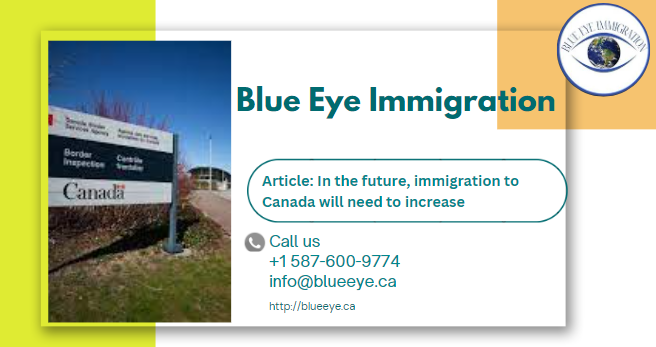Canada said on November 1st that it will maintain current immigration levels in the hopes of welcoming about 500,000 people annually in 2025 and 2026.
Even though immigration to Canada is currently at all-time highs, a recent report from the Royal Bank of Canada (RBC) indicates that immigration levels will probably need to rise again soon. The report also states that current immigration rates in Canada will simply not be sufficient to support the country’s population and meet demand for labor on the domestic labor market.
The circumstances of today
Immigration is necessary to Canada for a number of reasons, the most important of which is to solve issues with the labor market and population of the nation.
Canada boasts one of the oldest populations in the world together with a low fertility rate (1.40 births per woman) that is now typical of many western nations. Immigration is important because of this confluence of variables that prevent Canada from replenishing its population only via natural birth. Further pressures that Canada’s economy (ranked ninth in the world by GDP) places on its labor market—which is affected by the same replenishment issue that Canada’s population faces—are linked to this issue.
These two elements serve to highlight the need for immigration in order to preserve Canada’s wealth and general well-being going forward. With this knowledge in hand, it would make sense to conclude that these are the causes of Canada’s current record-breaking immigration rate. This is just half of the picture, though, when one considers the present stabilization of immigration objectives.
Why there may be a need for increased immigration
Up until at least 2026, the current immigration objectives are scheduled to normalize at 500,000 immigrants annually. Even while this year’s number of new arrivals is a record-breaking 1.3% of Canada’s total population, it is insufficient to stabilize the country’s population and, thus, insufficient to sustainably fulfill labor demand in the future.
As per the RBC analysis, for Canada to maintain its present population, it would require an annual immigration rate of 2.1%, which would equate to 849,944 new permanent residents annually (as of writing). This indicates that in order to counteract Canada’s low birth rate and aging population, existing immigration objectives would need to rise by more than 300,000 per year.
Similar conclusions were drawn from a Desjardins research on the ideal immigration level for Canada, which was published earlier in 2023. The paper states that in addition to having to increase immigration, Canada would also need to see an increase in the working-age population (keep in mind that the 500,000 newcomer number includes immigrants from all categories, including family sponsorships and refugees). The Desjardins study, which took into account Canada’s socialized healthcare system and labor market, calculated that the annual growth of the working-age population would need to be 2.2% (721,600 newcomers) in order to maintain the current ratios of young to old working people, or 4.5% (1,476,000 newcomers) in order to maintain the historical ratio of working-aged to retired people.
According to these two projections, Canada will need to keep up its current rate of immigration growth, not only to meet the needs of its growing labor force but also to support the nation’s infrastructure, healthcare system, and larger social institutions.

The requirement to maintain levels between 2024 and 2026
The RBC research notes that while Canada has a long-standing need for immigrants, the IRCC’s choice to stabilize existing levels is also justified.
What will ultimately define the success of Canada’s immigration program is its capacity to accept and assimilate newcomers into its economy and demographics. The nation’s capacity to provide affordable housing for both new immigrants and Canadians has come under question in the aftermath of the recent housing crisis, a development that has further stoked controversy around immigration.
The number of temporary residents (those with study or employment permits), which witnessed a sharp rise in the wake of the COVID-19 outbreak, would be revisited, according to the IRCC’s commitment. Additionally, the federal government has committed to addressing significant labor shortages in the construction industry, a field with a persistent lack of job openings, through balanced immigration that is indicative of the stabilized immigration targets. This will enable the reconciliation of labor shortages and rising housing demand, which is something that Canadian economists have been advocating for.
